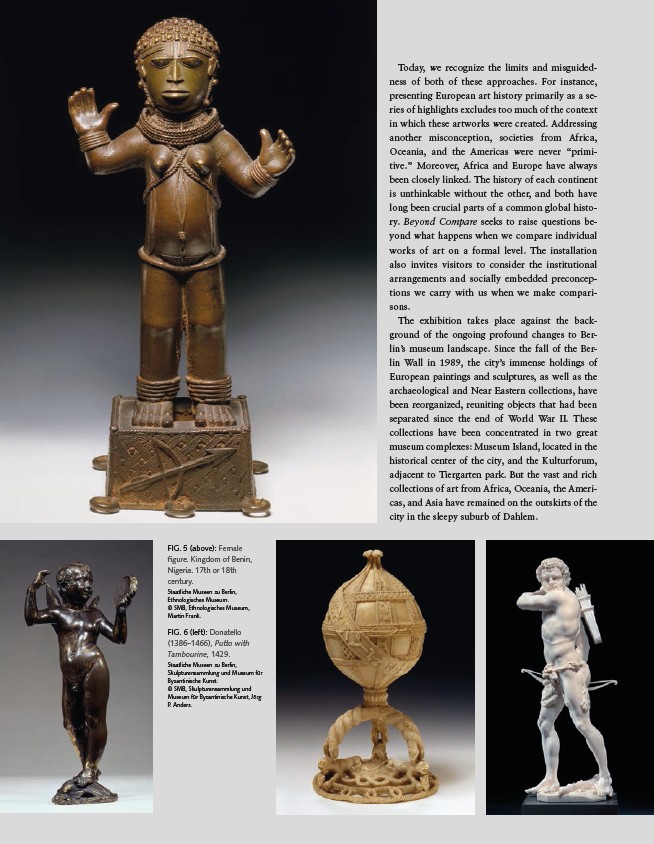
72
FIG. 5 (above): Female
figure. Kingdom of Benin,
Nigeria. 17th or 18th
century.
Staatliche Museen zu Berlin,
Ethnologisches Museum.
© SMB, Ethnologisches Museum,
Martin Frank.
FIG. 6 (left): Donatello
(1386–1466), Putto with
Tambourine, 1429.
Staatliche Museen zu Berlin,
Skulpturensammlung und Museum für
Byzantinische Kunst.
© SMB, Skulpturensammlung und
Museum für Byzantinische Kunst, Jörg
P. Anders.
Today, we recognize the limits and misguidedness
of both of these approaches. For instance,
presenting European art history primarily as a series
of highlights excludes too much of the context
in which these artworks were created. Addressing
another misconception, societies from Africa,
Oceania, and the Americas were never “primitive.”
Moreover, Africa and Europe have always
been closely linked. The history of each continent
is unthinkable without the other, and both have
long been crucial parts of a common global history.
Beyond Compare seeks to raise questions beyond
what happens when we compare individual
works of art on a formal level. The installation
also invites visitors to consider the institutional
arrangements and socially embedded preconceptions
we carry with us when we make comparisons.
The exhibition takes place against the background
of the ongoing profound changes to Berlin’s
museum landscape. Since the fall of the Berlin
Wall in 1989, the city’s immense holdings of
European paintings and sculptures, as well as the
archaeological and Near Eastern collections, have
been reorganized, reuniting objects that had been
separated since the end of World War II. These
collections have been concentrated in two great
museum complexes: Museum Island, located in the
historical center of the city, and the Kulturforum,
adjacent to Tiergarten park. But the vast and rich
collections of art from Africa, Oceania, the Americas,
and Asia have remained on the outskirts of the
city in the sleepy suburb of Dahlem.